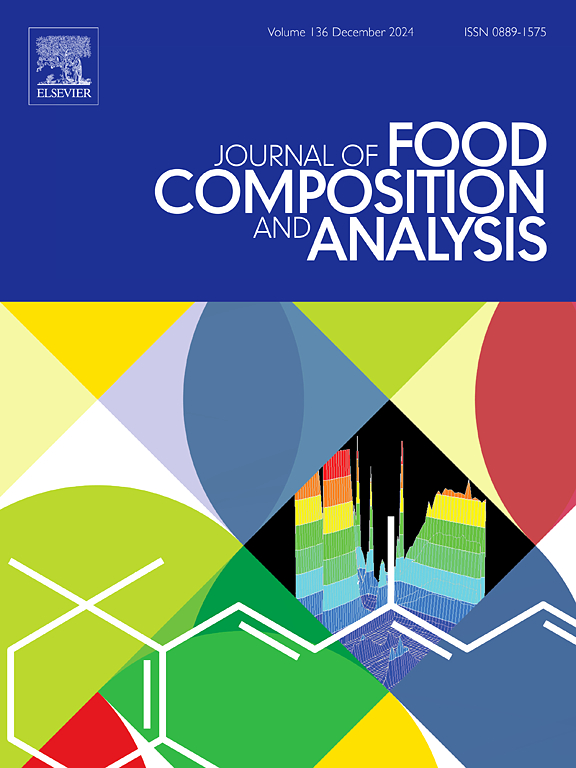Automated 3D wheat tissue analysis using x-ray CT and deep learning
IF 4.6
2区 农林科学
Q2 CHEMISTRY, APPLIED
引用次数: 0
Abstract
Understanding wheat grain internal structures is critical for improving quality, pest resistance, and breeding efficiency. While X-ray computed tomography (CT) enables non-destructive 3D imaging, existing segmentation methods rely on manual intervention, introducing inefficiency and subjectivity. This study introduces the Residual Depthwise Separable Convolution and Vision Mamba U-Net (RDVM-UNet), an automated framework combining Depthwise Separable Convolution (DSConv) for efficient local feature extraction and Vision Mamba for global contextual modeling. Trained over 200 iterations, the model achieved a mean Intersection over Union (mIoU) of 95.4 % in segmenting wheat tissues (epidermis, embryo, endosperm). Validation across 10 varieties demonstrated robust generalizability (mIoU is 94.78 %) and rapid processing (9.65 s/grain). The framework generated 3D reconstructions, enabling precise quantification of morphological parameters (volume, surface area) critical for analyzing genetic-environmental-morphological relationships. By establishing a non-destructive, high-throughput pipeline, this work advances precision breeding, functional genomics, and trait optimization in cereal crops. RDVM-UNet bridges computational imaging and agricultural science, offering scalable solutions for crop phenotyping and quality enhancement.
使用x射线CT和深度学习的自动3D小麦组织分析
了解小麦籽粒内部结构对提高小麦品质、抗病虫害和育种效率具有重要意义。虽然x射线计算机断层扫描(CT)可以实现非破坏性的3D成像,但现有的分割方法依赖于人工干预,导致效率低下和主观性。本文介绍了残差深度可分离卷积和视觉曼巴U-Net (RDVM-UNet), RDVM-UNet是一个将深度可分离卷积(DSConv)用于高效的局部特征提取和视觉曼巴用于全局上下文建模的自动化框架。经过200多次迭代训练,该模型对小麦组织(表皮、胚、胚乳)的分割平均mIoU达到95.4 %。10个品种的验证证明了稳健的可推广性(mIoU为94.78 %)和快速处理(9.65 s/粒)。该框架生成3D重建,能够精确量化形态参数(体积,表面积),这对于分析遗传-环境-形态关系至关重要。通过建立非破坏性的高通量管道,本工作将推进谷类作物的精确育种、功能基因组学和性状优化。RDVM-UNet连接了计算成像和农业科学,为作物表型和质量提高提供可扩展的解决方案。
本文章由计算机程序翻译,如有差异,请以英文原文为准。
求助全文
约1分钟内获得全文
求助全文
来源期刊

Journal of Food Composition and Analysis
工程技术-食品科技
CiteScore
6.20
自引率
11.60%
发文量
601
审稿时长
53 days
期刊介绍:
The Journal of Food Composition and Analysis publishes manuscripts on scientific aspects of data on the chemical composition of human foods, with particular emphasis on actual data on composition of foods; analytical methods; studies on the manipulation, storage, distribution and use of food composition data; and studies on the statistics, use and distribution of such data and data systems. The Journal''s basis is nutrient composition, with increasing emphasis on bioactive non-nutrient and anti-nutrient components. Papers must provide sufficient description of the food samples, analytical methods, quality control procedures and statistical treatments of the data to permit the end users of the food composition data to evaluate the appropriateness of such data in their projects.
The Journal does not publish papers on: microbiological compounds; sensory quality; aromatics/volatiles in food and wine; essential oils; organoleptic characteristics of food; physical properties; or clinical papers and pharmacology-related papers.
 求助内容:
求助内容: 应助结果提醒方式:
应助结果提醒方式:


